The local hero Vincent Keymer outplayed Daniil Dubov and joined Leinier Dominguez in the lead of Pool B of the third leg of the FIDE Grand Prix Series, organized by World Chess. The rest of Round 3 games ended in a draw, which allowed Levon Aronian, Alexandr Predke, and Nikita Vitiugov to keep leading positions in other groups.
Two more games could have finished decisively today. Grigoriy Oparin came very close to upsetting Hikaru Nakamura, who eventually escaped with a draw. Sam Shankland had winning chances in the endgame with Alexandr Predke but could not make it work. It was the longest game of the day, which ended in a draw after 57 moves.
Pool A
Nakamura played the most existing game of the round. Oparin guessed his opponent’s choice in the opening right, which was the Queens-Indian Defence today. It has been more than five years since Hikaru Nakamura played it in the tournaments, so he was not expecting the idea of h4-h5-h6. White quickly got quite a promising position but had to play precisely in order not to give a chance for Black to consolidate.
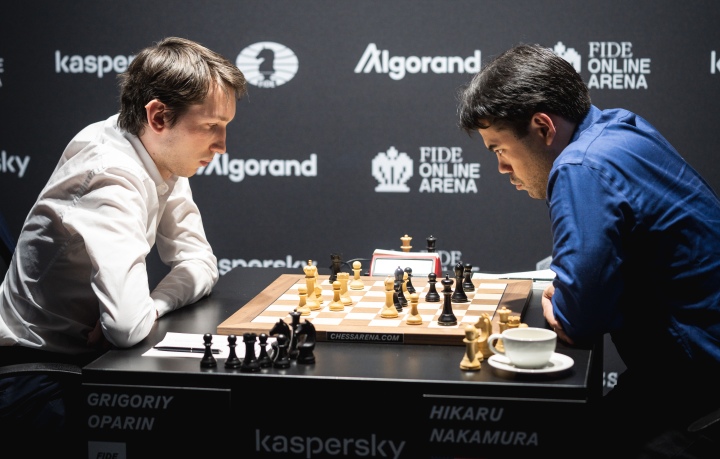
A beautiful move 19.Bg6 came as a huge surprise to Hikaru, who simply missed this option. “I was very upset with myself during the game because essentially I blundered one move. In this line with 19.Bg6 and after 19…fxg6 20. Qe7 Rd5 White has this Re6. I simply have forgotten this move existed,” said Hikaru in his post-game interview. Similarly to the game against Aronian in Round 1, the American player was ready to resign once his opponent had played 20.Bb1. Even better was 20.Bf5! simply winning a piece. Grigoriy failed to find these continuations and opted for 20.Bh7, which gave Hikaru some hope to escape with a draw. Despite being down a pawn, Black had some compensation due to the pair of Bishops and active pieces. After a few exchanges, the game ended in a draw after a three-fold repetition.
“After finding Bg6 it feels it would be nice to win the game, but it is what it is,” said Grigoriy Oparin after the game.
Andrey Esipenko and Levon Aronian tested one of the lines in the Ruy Lopez but Andrey mixed something up right in the opening and was clearly disappointed with his play. He had to show a certain level of creativity not to get into trouble and came up with an interesting idea 17.Bg5 which changed the course of the game. Levon Aronian saw the strongest continuation 17…Kh8 but started seeing ghosts in some lines as he pointed out after the game. He chose another option 17…h6 but it turned out that White could trade the queens and maintain the balance in the game that was drawn on move 33.
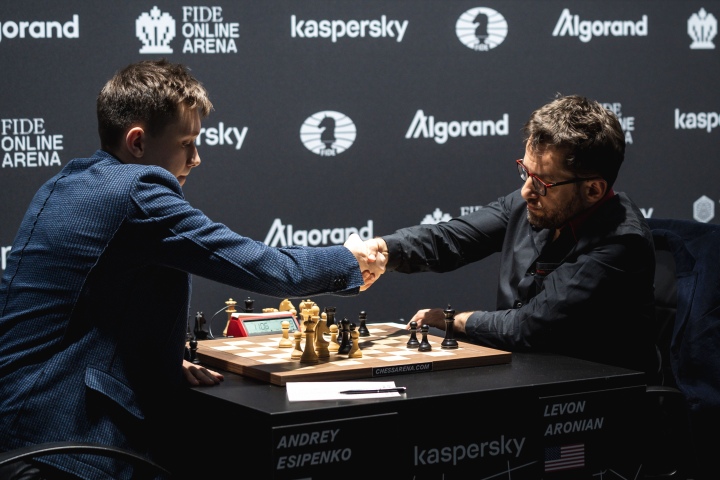
Pool B
The Ragozin Variation was played in the game Mamedyarov – Dminguez and for the first time in the tournament Shakhriyar Mamedyarov was satisfied with the outcome of the opening. He came up with a very tricky idea Ba2 hoping to get a very strong attack on the King’s side. The American Grandmaster proved he has nerves of steel once again and found very precise moves to stop ambitious plans of Azeri Grandmaster.
17-year-old Vincent Keymer managed to break his drawing streak in Berlin by defeating Daniil Dubov. Players chose a complicated line in Vienna Variation of Queen’s Gambit, where Daniil showed an original set up of the pieces by placing his knight on d7 with an idea of pushing c5. Vincent started to like his position after Black put his queen on e8 as he felt it was easier to play with White. The German thought he could afford many waiting moves without worsening his position. In contrast, Daniil thought he should get better after White’s Bishop maneuvers g5-f4-g3 as, in his opinion, it was not the way to play for victory with White. “I was trying to find some ways to get a better position, and I thought it must be winning, It became complicated and then I blundered a piece”, described the game Daniil.
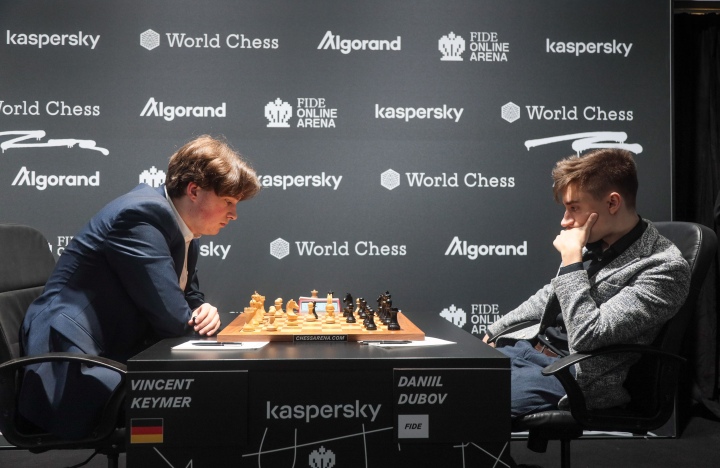
According to the heartless computer, the position became hopeless for Black after move 21 when Daniil didn’t remove his knight from d3 but went for a very complex line. White always had the upper hand from that moment to the very end. Vincent Keymer scored a crucial victory over Daniil Dubov, leaving him on minus two after three days of play.
Pool C
Sam Shankland and Alexandr Predke had an interesting discussion in the Carlsbad structure of the Queen’s Gambit. Alexandr chose an interesting plan of advancing his pawns and the queenside and trading his light-squared bishop on a6. White regrouped his pieces and managed to place his knight on the central square e5 but didn’t achieve much by this point. The first critical moment happened on move 23 when Predke carelessly played Nc4 missing a strong reply 24.a4, which left Black with weaknesses on the queenside. Shankland transposed into a rook ending with a pawn up, but it was not enough for a victory.
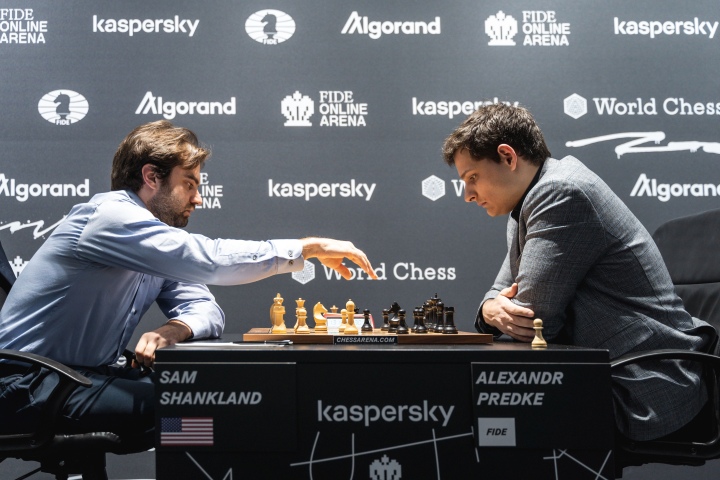
Maxime Vachier-Lagrave used his pet Gruenfled Defence against Wesley So reached a draw quite comfortably. “I have no idea what to play against Maxim’s Gruenfeld after seven years now”, confessed Welsey So. He didn’t expect the line with c5 and Bf5, which was previously played by Alexander Grischuk and had prepared for a different variation. Maxim didn’t want to burn bridges despite the tournament situation and found the precise way to avoid any trouble. After massive exchanges, the players ended up in an equal ending and signed the peace after 37 moves.
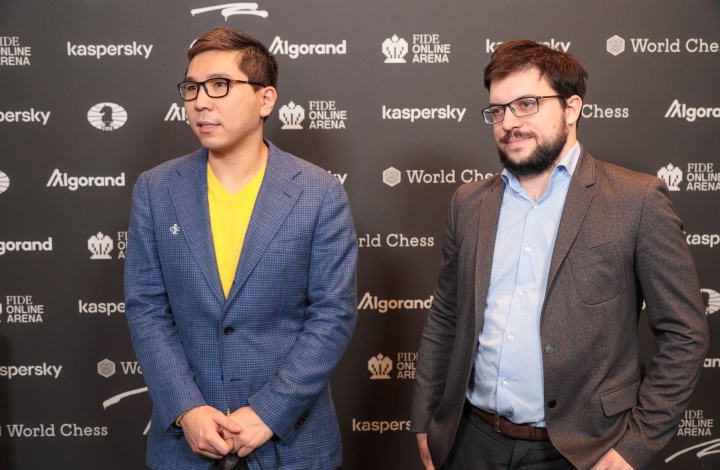
Pool D
The game Yu Yangyi – Amin Tabatabaei saw a rock-solid Makagonov-Bondarevsky system in which White has problems getting any edge. After the Chinese player made a thematic breakthrough in the center e3-e4, the game liquidated in a drawn endgame in which the opponents spit the point on move 30.
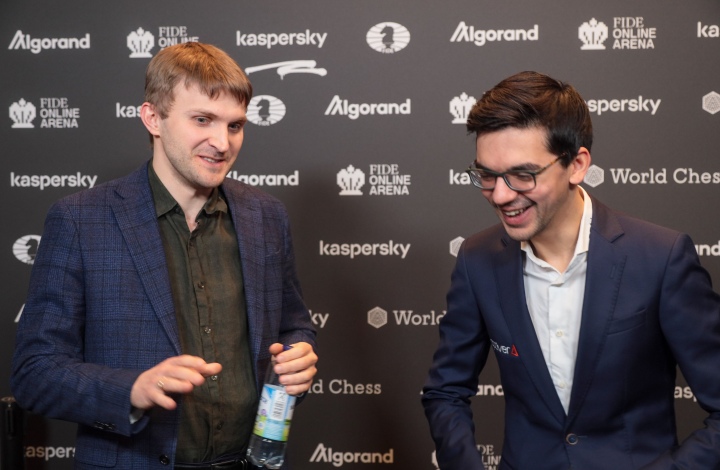
Nikita Vitiugov essayed the Paulsen System of Sicilian against Anish Giri, and very soon, the opponents found themselves in uncharted territory. After the players castled to the opposite wings, White got some edge, but in such positions, the value of every move is very high. Most likely, the queen sortie 19.Qh5 was too optimistic as it cost Anish a couple of precious tempi. After a timely pawn sacrifice 21…e5! followed by 22…Be6 Black engineered some dangerous counterplay on the queenside, which resulted in a draw perpetual on move 30.
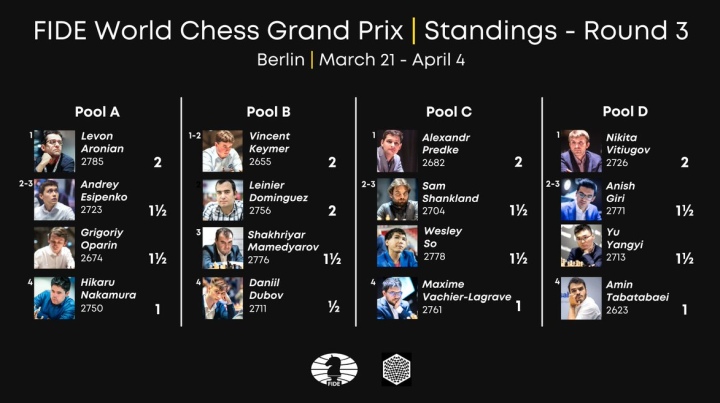
Round 4 will be played on March 25 with the pairings as follows:
Pool A:
Oparin, Grigoriy – Esipenko, Andrey
Nakamura, Hikaru – Aronian, Levon
Pool B:
Mamedyarov, Shakhriyar – Keymer, Vincent
Dominguez Perez, Leinier – Dubov, Daniil
Pool C:
So, Wesley – Shankland, Sam
Vachier-Lagrave, Maxime – Predke, Alexandr
Pool D:
Yu, Yangyi – Giri, Anish
Tabatabaei, Amin – Vitiugov, Nikita
The FIDE Grand Prix Series is brought to you by World Chess.
Leading partners supporting the FIDE Grand Prix Series 2022 include:
Kaspersky as the Official Cybersecurity Partner;
Algorand as the Official Blockchain Partner;
Prytek as the Technology Transfer Partner;
FIDE Online Arena as the official Partner.
Photo: Official Photo FIDE Grand Prix Berlin Press kit and Niki Riga







